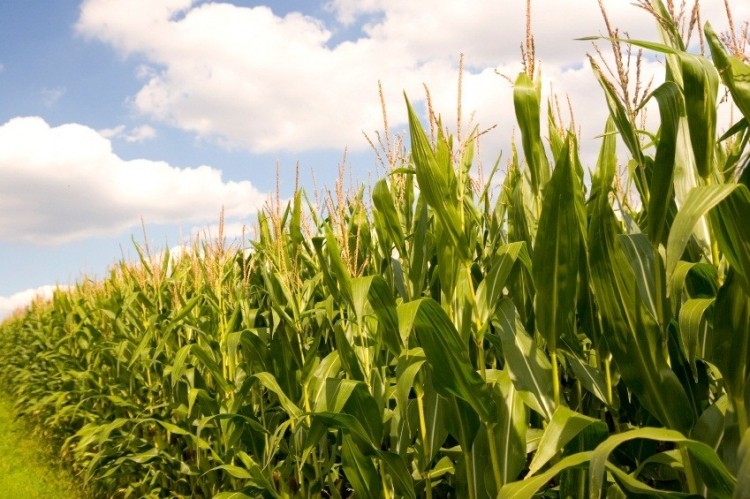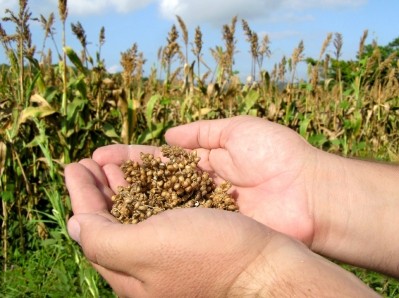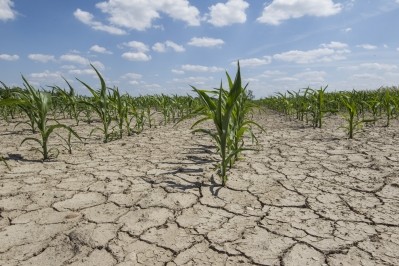USDA: Climbing acres, corn bushels, shrinking soy production

The US Department of Agriculture’s (USDA) World Agricultural Supply and Demand Estimates report, released Thursday, brought several surprises for producers with a change in the acres planted and harvested for some feed crops and new yield expectations for both soybeans and corn.
However, the average price for the two commodities was not altered.
There can always be differences among feed crops depending on where they were planted, the timing and weather conditions, said Michael Langemeier, professor in the department of agricultural economics with Purdue University.
However, this year has been notable for the variation between crops – especially for soybean producers, he said.
One way to assess how large a surprise is to check if the market reacts and then to see if the USDA changes its pricing, he told FeedNavigator. “That’s my way of gauging the surprise to UDSA and they didn’t [react], but there’s a pretty wide range on prices,” he added.
Corn surprise
The expectation for corn supplies in 2017/18 is to have the second largest on record, the USDA said. Feed and residual use also is expected to increase by 25m bushels, although ending stocks remained the same.
Corn production was increased 96m bushes to 14.28bn, the department said. The projected price range for season average corn price remained at $2.80 to $3.60 a bushel.
Global production for 2017/18 was forecast to increase 2.8m tons, the department said. And the coarse grain outlook was for a rise in production and consumption with a drop in stocks.
Increased corn production in countries including Nigeria, Turkey and Mozambique were expected to offset reductions for Russia, Ukraine, Ethiopia and Tanzania, the department said. Corn exports were increased for Mexico and Argentina.
There was a small market reaction to the increase in bushels per acre for the corn crop, said Langemeier. However, there was no change in price range from the USDA.
Soybean demand
Overall, soybean production for 2017/18 is forecast to be about 4.43bn bushels, the USDA said. The overall area harvested was increased 0.8m acres to 89.5m acres.
“They usually do the revisions on the planted and harvested acres and we were looking at this data,” said Langemeier. “The planted acres did have revisions for corn – they were down for corn and were up for soybeans – that’s one of the things what we were watching pretty carefully.”
However, yield was down 0.4 bushels an acre, the department said. Ending stocks were expected to be 430m bushels making ending stocks relative to use the highest since 2006/07.
The average soybean price is expected to be $8.35 to $10.05 per bushel, while the price for soybean meal remains $290 to $330 a short ton, the department said.
Global production for oilseeds also dropped based on reductions in soybeans, rapeseed and sunflower seed, the USDA said. Soybean production dropped for Russia and Ukraine but was partially offset by China and Mexico.
Predictions of soybean exports also dropped in some regions, with other oilseed exports down as well, the department said.
“Planted acres were up about three-quarters of a million acres,” said Langemeier. “That was a surprise to some people – the planted and harvested acres.”
In addition to changes in acreage, the yield predictions offered some surprises in soybeans, he said. “The market reacted to that – the yield estimate for soybeans dropped,” he added.
“The drop in yield is bullish,” he said.
Additionally for soybeans, the stocks to use ratio dropped from 11-10%, he said. The change could indicate a tighter amount of the crop being available down the road.
“Short-term, lower stock to use is bullish, and long-term I don’t know if it will make a difference,” he said. “The change in stock is probably why market reacted.”
However, one of the ongoing stories with soybean production is the demand, said Langemeier. “That we can grow 90m acres of soybeans and there’s not a big glut – the demand is phenomenal,” he added.
However, the amount of acres planted in soybeans also has kept the price in check for soybean meal, he said.
Wheat and other grains
The forecast for wheat supplies for 2017/18 decreased slightly, said the UDSA. Beginning stocks also were dropped, but wheat production increased to 1.7bn bushels.
Projected feed and residual use for 2017/18 declined by 30m bushels, based on a drop in the June-August disappearance, the department said. The change in corn supplies is expected to reduce the use of wheat in feed.
Ending stocks for 2017/18 are predicted to be slightly higher from the reduction in use, but should remain below last year’s level, the department said. The projected season average farm price for 2017/18 kept a midpoint of $4.60 a bushel but saw the range shrink to $4.40 to $4.80.
Global supplies increased with expectation of an increased production in Russia, the EU and India offsetting a decline in Australia, the department said. International trade was predicted to see increased exports and reduced imports for India and Turkey.
Grain sorghum saw a 2.4-bushel increase in yield, said the USDA. However, it is expected to be offset by a reduction in harvested area.












